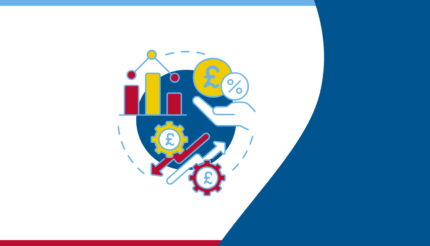We often hear the statement that turnover is vanity and that profit is sanity. So where does that leave cash?
If profit is a theory, then cash is a fact – it is the truth of a business, because without it, a business or any size can fail.
Within the ActionCoach programme we coach business owners on Money Mastery and the importance of really knowing your numbers. It is vital to know your current numbers, historic numbers and the ones that will create your business future.
If you want to manage something, you first have to measure it; knowing your historic numbers will allow you to set financial key performance indicators. One of these indicators should be the monitoring of you cash gap.
The cash gap is the time (days) it takes between a company paying out cash for goods and services bought, and the time it takes to receive cash from customers who have purchased the goods or services.
The cash gap is basically the delay a business faces and if the delay is too big, it could result in a cash flow crisis.
How to reduce the cash gap
The most important step in reducing the cash gap is to be aware of it in the first place. Make sure you know your numbers so you can manage and make steps to improve and reduce before it is too late.
Here are some steps you can take to reduce the cash gap.
- Require partial or a full deposit on a contract, so that part payment is made up front.
- It may seem obvious, but make sure you finish projects so that they can be invoiced.
- As soon as a project is completed – get the invoice raised. Don’t hang around. As soon as it is completed = Invoice. Use a delivery and acceptance process at the end of job so that the client has signed off completion and an invoice can be raised.
- Systemise your invoice raising process. There are plenty of cloud accounting software solutions which will reduce the time it takes to raise an invoice. The more automated you can make it, the less time it will take and it won’t be such a mammoth task, especially if you are having to raise a large number of invoices at the same time.
- Complete your billing on a weekly basis. Don’t add more time into the process by delaying. Add invoicing time into your default diary.
- Change the terms of payment; switch from 30 days to 14 or even 7 days.
- Offer a small discount for early payments.
- Have a process for chasing late payments. Don’t send a reminder 7 days after the due date to tell them they are late! Send a reminder 7 days before it is due to remind them. Write a clear debt collection policy and procedure and stick to it.
- For those invoices that do go over their due date, add and collect interest on the overdue amount.
- Use a debt collection company or outsource the whole invoicing / collection process.
- Negotiate terms with your suppliers – can you increase the terms that you are on? Can you pay on 60 days? or part payments?
- Agree progress payments throughout a project for reaching agreed project milestones.
There are many other small changes you can make to ensure that your cash gap is reduced so that cash flow is healthy and thriving. Get in touch with us to know more.





